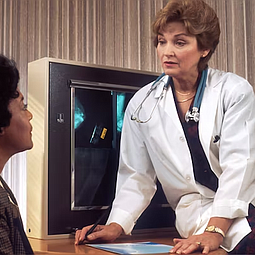Home vs Retirement Community: Comparing the Costs
December 29, 2022 at 4:33 p.m.
A senior living resource, Where You Live Matters, took a comparative look at senior housing costs (as of May 2022).
The non-profit organization, asked the question, cost-wise, what’s the better choice: aging in place at home or moving to a senior living community? Of course, there are so many variables and you’ll need to crunch the numbers on your own, but here is what “Where You Live Matters” had to say about the question.
First you will need to make a careful review of expenses with an eye to creating a clear understanding of what you will and won’t get in your home vs. a retirement community.
Living at home isn’t free
When tallying up the costs of staying in your own home, be sure to include monthly, annual and occasional expenses such as rent/mortgage, insurance, taxes, property maintenance and regular improvements as part of that list. Add to that, utilities, groceries and possibly lawn and cleaning services. Also keep in mind less frequent expenses such as replacing hot water heaters and appliances, and clearing sewer lines, for example. Will your house need a new roof? Try to consider as many items as possible while you add up your expenses of staying in your home.
After that, begin to consider modifications you may need to make in your home in order to stay there as you age in place. Some are relatively easy, such as replacing doorknobs with handles, installing grab bars near the tub and toilet. Some may be more difficult and expensive, such as widening doorways to allow for wheelchair access, installing lifts or ramps. Living at home as you grow older may also mean hiring caregivers to help in the home. The national averages show home health aids at $19-$20 an hour (or more in expensive areas such as the greater Seattle area). Will you need smart technologies such as fall monitors (monthly fee -- $40 on average).
Retirement community costs
Be sure to start with knowing all the upfront costs of moving in in addition to the monthly fee. Is there a move-in fee on top of that? Make certain you know all the services that are part of that monthly fee and what other services are available and how much they will add to the costs should you decide to add them.
If you move into a senior living community, homeownership costs for taxes, insurance, utilities, repairs, garbage service and so forth are all covered by your monthly service fee. Your appliances and even lightbulbs will be replaced when needed at no additional cost.
In all but the most basic senior apartments, retirement communities offer recreation and entertainment, possibly a fitness center, a library, beauty salon/barbershop, craft workshops, scheduled transportation – and it’s all covered by your monthly fee. In fact, one of the beauties of living in a senior community is that the services and that make everyday living simpler is covered by the monthly fee. On top of that, many senior communities offer meal plans as part of the monthly fee, and so your current grocery bill will all but disappear.
A wide variety of choices
Independent living communities usually offer social activities and events, plus transportation and wellness opportunities. Some communities offer additional à la carte services such as housekeeping and laundry. Average national costs of independent living depend on your local housing market, but 55+ rental communities with few benefits and services may be comparable to conventional apartments in your area. Add in more services and amenities, the costs will rise. If you have an independent living apartment within a community that also offers assisted living, you may be able to contract for assistance for as little as 15-minute increments. (Most outside caregiving services require a 4-to-6-hour commitment.)
Assisted living communities offer private apartments but with support from caregivers that are provided by the community. The most commonly needed services in assisted living are medication reminders and personal care such as bathing, grooming and dressing). Housekeeping, meals, laundry and life enrichment programs are included.
Continuing Care Retirement Communities, also known as CCRCs or Life Plan Communities offer the full range of care right on the same campus should you ever need it. The services can include not only assisted living services, but also skilled nursing, memory care, and rehabilitation services following surgery, injury or hospitalization. CCRCs usually have an entrance fee that can start at $100,000 and go upward. Most people handle this upfront cost through the sale of their homes. On top of the entrance fee, there are monthly service fees that can range upward to several thousand dollars. Some CCRCs offer modified continuing care agreements that require smaller entrance feeds but limit access to health services.
In conclusion, when comparing costs of staying at home vs. moving into a retirement community, homework is required. Begin by figuring out all your current costs of staying at home. Consider what type of senior housing you would consider (independent, assisted living, CCRC). Then talk with several retirement communities in your preferred area in order to understand all the costs and services offered.
If you do decide to make the move, knowledge is king. Consult with a trusted expert before signing any contract.
Read the full article at www.whereyoulivematters.org/what-does-it-cost/.
Other resources include:
The non-profit organization, asked the question, cost-wise, what’s the better choice: aging in place at home or moving to a senior living community? Of course, there are so many variables and you’ll need to crunch the numbers on your own, but here is what “Where You Live Matters” had to say about the question.
First you will need to make a careful review of expenses with an eye to creating a clear understanding of what you will and won’t get in your home vs. a retirement community.
Living at home isn’t free
When tallying up the costs of staying in your own home, be sure to include monthly, annual and occasional expenses such as rent/mortgage, insurance, taxes, property maintenance and regular improvements as part of that list. Add to that, utilities, groceries and possibly lawn and cleaning services. Also keep in mind less frequent expenses such as replacing hot water heaters and appliances, and clearing sewer lines, for example. Will your house need a new roof? Try to consider as many items as possible while you add up your expenses of staying in your home.
After that, begin to consider modifications you may need to make in your home in order to stay there as you age in place. Some are relatively easy, such as replacing doorknobs with handles, installing grab bars near the tub and toilet. Some may be more difficult and expensive, such as widening doorways to allow for wheelchair access, installing lifts or ramps. Living at home as you grow older may also mean hiring caregivers to help in the home. The national averages show home health aids at $19-$20 an hour (or more in expensive areas such as the greater Seattle area). Will you need smart technologies such as fall monitors (monthly fee -- $40 on average).
Retirement community costs
Be sure to start with knowing all the upfront costs of moving in in addition to the monthly fee. Is there a move-in fee on top of that? Make certain you know all the services that are part of that monthly fee and what other services are available and how much they will add to the costs should you decide to add them.
If you move into a senior living community, homeownership costs for taxes, insurance, utilities, repairs, garbage service and so forth are all covered by your monthly service fee. Your appliances and even lightbulbs will be replaced when needed at no additional cost.
In all but the most basic senior apartments, retirement communities offer recreation and entertainment, possibly a fitness center, a library, beauty salon/barbershop, craft workshops, scheduled transportation – and it’s all covered by your monthly fee. In fact, one of the beauties of living in a senior community is that the services and that make everyday living simpler is covered by the monthly fee. On top of that, many senior communities offer meal plans as part of the monthly fee, and so your current grocery bill will all but disappear.
A wide variety of choices
Independent living communities usually offer social activities and events, plus transportation and wellness opportunities. Some communities offer additional à la carte services such as housekeeping and laundry. Average national costs of independent living depend on your local housing market, but 55+ rental communities with few benefits and services may be comparable to conventional apartments in your area. Add in more services and amenities, the costs will rise. If you have an independent living apartment within a community that also offers assisted living, you may be able to contract for assistance for as little as 15-minute increments. (Most outside caregiving services require a 4-to-6-hour commitment.)
Assisted living communities offer private apartments but with support from caregivers that are provided by the community. The most commonly needed services in assisted living are medication reminders and personal care such as bathing, grooming and dressing). Housekeeping, meals, laundry and life enrichment programs are included.
Continuing Care Retirement Communities, also known as CCRCs or Life Plan Communities offer the full range of care right on the same campus should you ever need it. The services can include not only assisted living services, but also skilled nursing, memory care, and rehabilitation services following surgery, injury or hospitalization. CCRCs usually have an entrance fee that can start at $100,000 and go upward. Most people handle this upfront cost through the sale of their homes. On top of the entrance fee, there are monthly service fees that can range upward to several thousand dollars. Some CCRCs offer modified continuing care agreements that require smaller entrance feeds but limit access to health services.
In conclusion, when comparing costs of staying at home vs. moving into a retirement community, homework is required. Begin by figuring out all your current costs of staying at home. Consider what type of senior housing you would consider (independent, assisted living, CCRC). Then talk with several retirement communities in your preferred area in order to understand all the costs and services offered.
If you do decide to make the move, knowledge is king. Consult with a trusted expert before signing any contract.
Read the full article at www.whereyoulivematters.org/what-does-it-cost/.
Other resources include:
- AARP.org Caregiving Resource Center
- Genworth Financial’s 2020 Cost of Care
- Merrill Lynch Retirement Study in partnership with AgeWave, Family & Retirement: The Elephant in the Room





